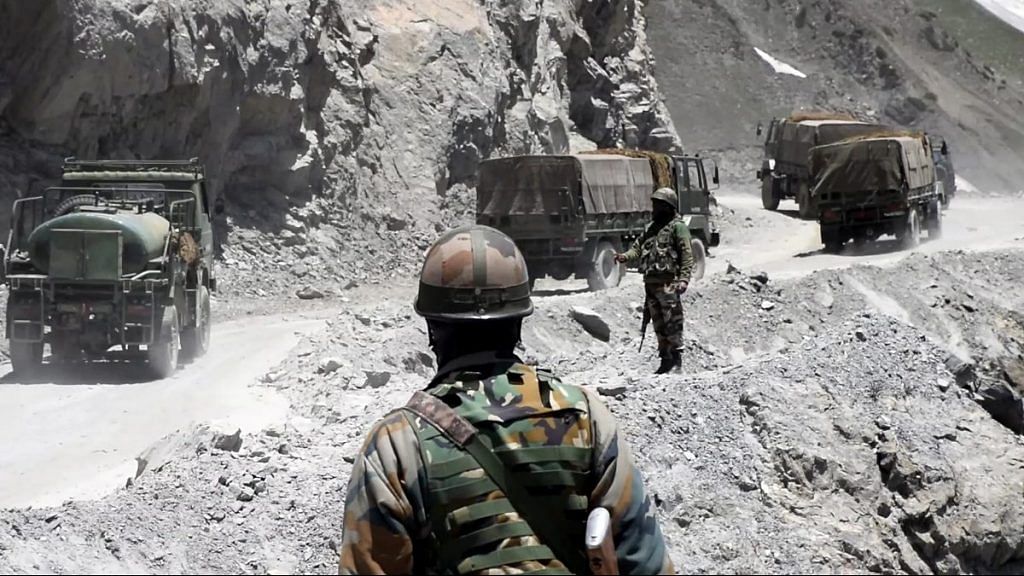At a time when the Brigade Commander-level talks are going on in Chushul to resolve the five-month-old stand-off in Ladakh region, the Army’s tactical advance in positions extending from the south of Pangong Tso to Spanggur Tso is a well thought out strategy to thwart Chinese ambitions. It is now clear that the ISR reports suggested Chinese troop movement in the foothills of these tops, and hence, the action. It would have been a disaster if the Chinese had managed to control the peaks.
Chinese President Xi Jinping, as head of the PLA, becomes directly responsible for anything that happens in the ongoing stand-off — good or bad. The occupation of these heights by the Army appears to have come as a warning to Beijing that India’s response mechanism is in a fighting fit condition and that New Delhi is militarily and psychologically prepared for a long haul.
Also read: Chinese Foreign Minister Wang Yi to attend virtual BRICS meet amid rising border tensions
Is Beijing dialling down?
The Army has reportedly occupied Magar and Gurung hills, Richin La and some strategic heights overlooking the People’s Liberation Army (PLA) camps. There are also unconfirmed reports claiming that the Army has hoisted the Tricolour on these five points: BlackTop, HelmetTop, Spangur Gap, Trishul and Hunan/Requin or Renchenla. It is widely believed that these tops had remained unoccupied since 1962. Though it is not clear as to why the Army had left these tops unoccupied till now, the freezing temperatures could be a major reason. With the PLA nowhere in sight, the Army could have assessed the immediate threat perception to minimum, thus leaving the tops unguarded.
That the PLA offered least resistance this time around is a sign Beijing preferred to ask its forces to step back. This could either mean a green signal to de-escalation or a strategic withdrawal, before mounting a fierce attack. The former seems to be the case, going by the subdued statements by the Chinese side. The Chinese are probably also aware of the strength of Indian forces defending the forward areas. They constitute highly-trained fighters selected from the Vikas regiment of the Special Frontier Force that also has India-born Tibetans who are endowed with physical strength to endure the harsh weather in the high altitudes.
While the PLA is believed to be digging its heels in areas under its occupation, the Army’s advance gives New Delhi some advantage in the ongoing talks. New Delhi may not agree to vacate these newly occupied places by the Army, but will surely insist on China restoring the status quo ante.
Also read: Don’t try any misadventure amid India’s tensions with China, CDS Rawat warns Pakistan
The LAC troubles
The Agreement on the Maintenance of Peace and Tranquillity along the Line of Actual Control in the India-China Border Areas, signed on 7 September 1993 — the first major conventional CBM (confidence building measures) between the two countries — strongly advocates peaceful resolution of the border issue between the two countries through friendly consultations. Both countries have agreed to keep minimum military force conforming to the principle of ‘mutual and equal’ security.
The second agreement, signed in 1996, pertains to the CBMs in the military field along the Line of Actual Control in the India-China border areas. This agreement was primarily aimed at fulfilling the agenda of the first CBM agreement of 1993. Article X of this agreement again affirms the commitment of both sides to the LAC while fully recognising the “different perceptions” on certain pockets for which the two sides agreed “to speed up the process of clarification” and also agreed “to exchange maps, indicating their respective perceptions”. The LAC between India and China has not yet been physically demarcated/ delineated on the ground or in military maps. This has led to both sides drawing their own perceptions of the LAC.
Beijing unilaterally decided to alter the status quo at the LAC and initiated action through the PLA. The Army has given a fitting reply and taken appropriate and reciprocal action. Going by Beijing’s mixed signals on restoring the status quo ante, New Delhi should be prepared for a longer period of hostilities and greater vigil in the days to come.
Also read: Negotiation is the way forward with China, says India amid rising tensions at LAC
Xi putting up a brave face
There is little doubt that the Chinese economy is facing turbulence and Beijing is putting up a brave face before the world. Many countries have called-off trade deals with China, effectively cancelling import and export of food items. This could have led to a serious demand-supply imbalance, prompting Xi Jinping to announce ‘operation clean plate’. It is the prerogative of any leader to educate his people about the virtues of avoiding wastage of food. But coming at a time when the country is facing a possible food shortage, such pontification should also be seen in the context of global anti-China coalition, increased animosity from the US and a setback in border stand-off with India.
The Defense experts had predicted early in the stand-off that India was in it for a long haul, especially after the Galwan clash and the subsequent failure of talks. But what has happened at Pangong Tso south bank is definitely ‘advantage India’.
The author is a member of the National Executive Committee of the BJP and former editor of Organiser. Views are personal.
